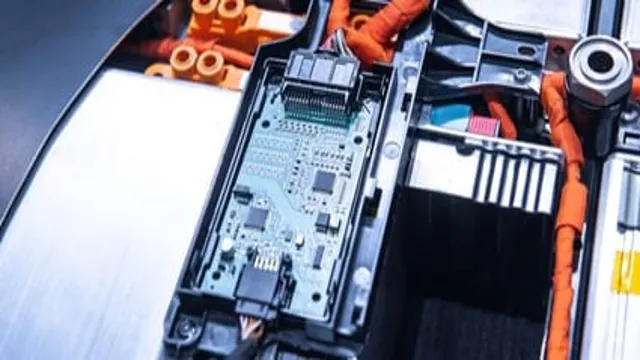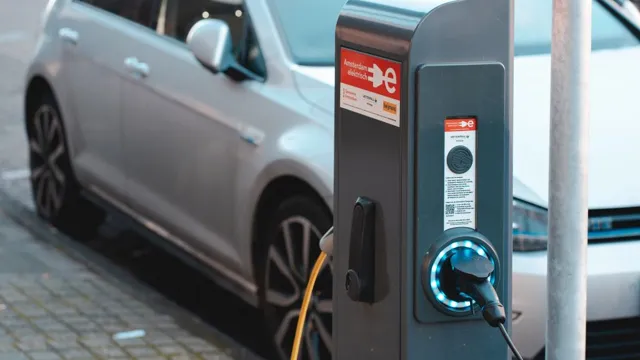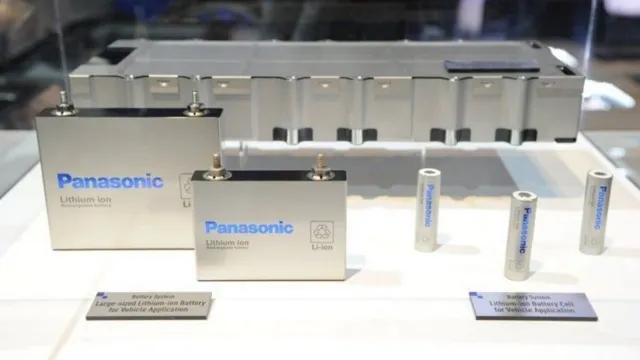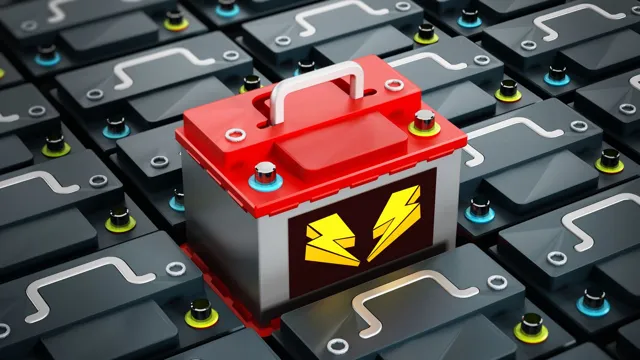Revving Up Your Car’s Power: Tips for Troubleshooting Low Battery Electrical Issues
A dead car battery can be frustrating, especially when you are in a hurry or stranded in the middle of nowhere. There are various reasons why a car battery may lose its power, and troubleshooting the issue can be puzzling. However, finding the root cause of the problem can help prevent future battery issues.
In this blog, we’ll explore some common reasons why your car battery may be experiencing power issues and discuss some tips to fix them. So, buckle up and let’s go for a ride!
Check Battery Connections
If your car’s electrical system is experiencing problems, one of the first things to check is the battery connections. This is because a loose or corroded connection can prevent the battery from getting enough power to provide the necessary electrical current. In turn, this can cause a range of issues from dimming headlights to a complete loss of power.
So, if you’re experiencing any of these symptoms, start by checking the battery connections. Begin by visually inspecting all the cables and contacts for any signs of wear or corrosion. Then, use a battery tester to check the charge level and strength of the battery, as well as the voltage and electrical flow.
By ensuring that the battery is properly connected and in good condition, you can help ensure that your car’s electrical system is running smoothly and reliably.
Inspect cables for corrosion or damage
When checking your car’s battery connections, it’s important to look beyond just making sure they are tightened. Inspect the cables themselves for corrosion or any signs of damage. Corrosion can cause a poor connection, leading to issues with starting your car or even draining your battery.
It’s a good idea to clean any corrosion with a mixture of baking soda and water, followed by a thorough rinse and allowing it to dry completely before reattaching the cables. If there is any damage to the cables, it may be necessary to replace them entirely. By regularly checking the battery connections and cables, you can ensure that your car’s electrical system is running smoothly and avoid any potential breakdowns on the road.

Tighten loose connections
When it comes to maintaining your car’s battery, it’s important to regularly check the connections. Loose or corroded connections can have a negative impact on your car’s overall performance and even lead to battery failure. To check the connections, you’ll want to start by turning off the ignition and disconnecting the negative terminal first, followed by the positive terminal.
Inspect the connections for any signs of corrosion or looseness, and if needed, use a wire brush to clean off any buildup. Make sure the connections are tight before reconnecting the terminals, taking extra care not to over-tighten them. By taking the time to check and tighten your battery connections, you can ensure that your car starts reliably and runs smoothly.
Test Alternator
If your battery isn’t getting enough power in your car, the culprit might be a faulty alternator. The alternator is a crucial component of your car’s electrical system as it generates power for the battery and various other electrical components. Therefore, if the alternator isn’t functioning correctly, it can affect the battery’s performance and prevent it from receiving enough power.
A simple way to test whether the alternator is the root cause of the problem is by using a voltmeter. First, you need to start your car and let it idle for a few minutes. Then, connect the voltmeter to the battery terminals, and observe the reading; it should be around 14 volts.
If it’s low, the alternator is probably the issue. However, if you’re not comfortable performing this test, it’s best to take your car to a professional mechanic and have them diagnose the problem. Don’t ignore any warning signs of a faulty alternator, or you could end up stranded on the side of the road.
Use a multimeter to check voltage output
If you suspect that your alternator might be failing, one way to check is to use a multimeter to check the voltage output. First, set your multimeter to the DC voltage setting and connect the red lead to the positive terminal of the battery and the black lead to the negative terminal. Start the vehicle and let it run for a few minutes to allow the alternator to fully charge the battery.
Then, check the voltage reading on the multimeter. It should be between 15 and 1
5 volts. If the reading is lower than this range, it could be an indication that the alternator is not functioning properly. However, keep in mind that other factors such as a faulty battery or wiring could also be causing the issue.
It’s always best to consult a professional mechanic to diagnose and fix the problem. By regularly checking the health of your alternator, you can ensure the safety and reliability of your vehicle on the road.
Look for signs of wear on the belt
One of the most important indicators that your vehicle’s alternator may be experiencing issues is a worn-out belt. Over time, the belt can become cracked, frayed, or stretched out, which can lead to slipping or completely breaking. If the alternator belt fails, the battery will not receive the necessary charge, and the vehicle will eventually stop running.
To diagnose the issue, you can perform a simple test by turning on your vehicle’s engine while the hood is raised. Look for signs of wear on the belt while the engine is running, including any noise, vibration, or hesitation. If the alternator belt appears to be worn, it is important to repair or replace it immediately to prevent further damage to your vehicle’s electrical systems.
By taking care of your alternator and regularly checking the condition of the belt, you can avoid unexpected breakdowns and expensive repairs. Remember to always consult your owner’s manual for the recommended maintenance schedule and to ensure that you are performing the test correctly.
Diagnostic Testing
If you’re experiencing problems with your car’s electrical system and suspect that your battery isn’t getting enough power, it’s important to take your vehicle for diagnostic testing as soon as possible. Driving with an electrical system that isn’t functioning properly can be dangerous, particularly if your vehicle stalls or ceases to start working while you’re out on the road. A diagnostic test can pinpoint the source of the problem, which can range from an issue with the battery itself to a malfunctioning alternator or starter.
Depending on the cause, you may need to replace specific parts of your vehicle or invest in a whole new battery altogether. The good news is that a diagnostic test can help you determine exactly what needs to be done, so you can get your vehicle back on the road safely and confidently. Remember, tackling car electrical problems can be a daunting task, but taking swift action to address the issue can save you money, prevent further damage to your vehicle, and ensure your safety on the road.
Perform load testing on the battery
When it comes to diagnosing the health of a battery, load testing is an important tool in determining its capabilities and limitations. This type of testing involves placing a load on the battery to see how it holds up under strain. Load testing can reveal the actual state of the battery and whether it is still able to provide adequate power for its intended use.
By performing load testing, you can avoid unexpected power failures and the potentially costly damage that they can cause. It’s a good idea to perform load testing on your battery periodically to ensure that it is still functioning as it should. If you notice any issues with your battery, it’s best to get it checked out by a professional to avoid any potential hazards and extend its lifespan.
Remember that a well-maintained battery is essential for the smooth operation of your devices and equipment.
Check for parasitic drain on the electrical system
If you’re experiencing trouble starting your vehicle or have a dead battery often, the issue may be a parasitic drain on your electrical system. This occurs when something in your car is drawing power even when it’s turned off, causing your battery to drain overnight. The best way to check for a parasitic drain is to take your vehicle to a mechanic or auto parts store that offers diagnostic testing.
During the diagnostic test, a technician will hook up a meter to your battery and check its draw. They will then begin to power down the car electrical systems one by one to find where the drain is coming from. It could be a component such as a faulty alternator, electric window switch, or even a malfunctioning computer.
Once the issue is identified, the technician will repair or replace any necessary parts to correct the parasitic drain issue. It’s important to address this problem promptly, as a parasitic drain can cause damage to your battery and other electrical components of your vehicle over time. Regularly testing your battery and keeping it in good condition can also help prevent parasitic drains from happening in the first place.
So if you’re experiencing any unusual electrical issues, don’t hesitate to get your vehicle tested for a parasitic drain.
Possible Causes of Low Power
If you’re experiencing low power from your car’s battery, there could be a few causes. One possible reason is that the battery isn’t getting enough power from the electrical system. This could be due to a faulty alternator not charging the battery properly, or a loose or corroded connection in the wiring.
Another reason could be that the battery itself is old or worn out and not holding a charge as well as it used to. Extreme temperatures can also play a role in a battery’s performance, as hot weather can cause the battery fluid to evaporate and cold weather can make it harder for the battery to produce the necessary power. It’s important to get to the root of the issue to ensure your car is operating as it should.
Age and wear of the battery
One possible cause of low power in electronic devices is the age and wear of the battery. Over time, batteries naturally lose their ability to hold a charge and deliver power to the device. This is particularly true for rechargeable batteries, which have a limited number of charge cycles before they begin to degrade.
In addition, exposure to heat, cold, and other environmental factors can also affect battery performance. If your device is several years old or has been heavily used, it may be time to replace the battery. This can often be done by a professional repair service or through the manufacturer.
Be sure to use a high-quality replacement battery to ensure optimal performance and longevity.
Faulty alternator or voltage regulator
One common cause of low power in an automobile is a faulty alternator or voltage regulator. These two components work together to ensure the car’s battery is charged and the electrical system is functioning properly. If either of these components fails, it can result in a lack of power and potentially lead to the car stalling or not starting at all.
Signs of a faulty alternator or voltage regulator include dimming headlights, flickering interior lights, and a battery light on the dashboard. It’s important to address these issues promptly and have a professional mechanic inspect and replace any faulty components to avoid further damage to the car’s electrical system. A simple way to prevent these problems is by regularly maintaining the battery and ensuring that it’s being charged properly.
A healthy battery and a functioning alternator will help keep your car running smoothly and provide the necessary power for all its electrical components to work effectively, including the lights, radio, air conditioning, and more.
Electrical system malfunction
Electrical system malfunction If you’re experiencing low power in your electrical system, there could be several possible causes. It could be a problem with your battery, alternator, or even your spark plugs. Alternatively, it could be an issue with your fuel system or air intake.
One common cause of low power is a clogged air filter, which can prevent the engine from getting enough air to operate efficiently. Another possibility is a faulty oxygen sensor, which can cause the engine to run too rich or too lean, resulting in decreased power. Whatever the cause may be, it’s important to have your vehicle inspected by a qualified mechanic to diagnose and resolve any issues with your electrical system.
Don’t let low power keep you from enjoying the full potential of your vehicle!
Preventing Battery Power Issues
If you’ve ever experienced the frustration of a car battery not getting enough power, then you know how important it is to keep your electrical system running smoothly. One of the primary reasons why batteries fail to function correctly is due to poor maintenance of the alternator and other electrical components. Regular inspection and cleaning of the battery and cables can also help to prevent issues.
Additionally, it’s essential to be mindful of excessive use of electrical accessories, such as headlights, heated seats, and phone chargers, which can all drain the battery. Finally, paying attention to weather conditions and seasonal changes can also be critical in preventing battery power issues, as extreme temperatures can affect the battery’s lifespan. By taking these preventive measures, you can help ensure that your car’s battery is always getting enough power to avoid being left stranded.
Regular maintenance and inspection
Regular maintenance and inspection are essential when it comes to preventing battery power issues. If you neglect your car battery for too long, you may end up facing problems such as a dead battery or reduced battery life. To avoid such issues, it is important to have your battery checked regularly by a professional mechanic.
They can inspect the battery’s performance and make sure that it is in good working condition. Additionally, you can perform simple maintenance tasks yourself to prolong the battery’s life. For instance, removing corrosion from the battery terminals, checking the electrolyte levels, and ensuring the battery is securely mounted are all simple actions that can increase your battery’s lifespan.
Remember, a well-maintained car battery will not only save you money on unnecessary repairs and replacements but also prevent you from getting stranded without power. So, make it a habit to inspect and maintain your battery regularly, and your car will thank you for it.
Replacing battery before it fails
Replacing battery before it fails not only saves you from the inconvenience of power issues but also helps prolong the life of your device. Batteries degrade over time, losing charge capacity, and eventually failing to hold a charge altogether. Preventing power issues by replacing your battery preemptively is a proactive way of ensuring your device functions optimally.
The cost of replacing a battery is often much lower than the cost of repairing and replacing damaged components caused by a failed battery. To know when to replace your battery, keep an eye on its performance and monitor signs like shorter battery life, decreased performance, and unusual noises or leaks. Replacing your battery before it fails will help you avoid power-related problems and will ensure that your device runs smoothly and efficiently.
Conclusion
In short, if your car battery is not getting enough power, there’s bound to be some electrifying sparks flying around. So, don’t play the wires too close to the vest and get your car checked by a professional before the sizzle turns into a flat-out fizzle.”
FAQs
What are some signs that my car’s battery is not getting enough power in the electrical system?
Some signs include dimming headlights, slow cranking when starting the car, or an illuminated battery warning light on the dashboard.
How can I test if my car’s battery is not getting enough power in the electrical system?
You can use a voltmeter to test the battery’s voltage. A fully charged battery should read between 12.6 and 12.8 volts, while a reading below 12 volts indicates a weak battery.
Can a bad alternator cause my car’s battery to not get enough power in the electrical system?
Yes, a bad alternator can cause the battery to not receive enough power. The alternator is responsible for charging the battery while the car is running, so if it is not functioning properly, the battery will not receive enough charge.
What should I do if I suspect my car’s battery is not getting enough power in the electrical system?
You should have the battery and alternator tested by a professional mechanic. They can diagnose the issue and make any necessary repairs or replacements. Additionally, make sure all electrical connections and cables are clean and tight.






